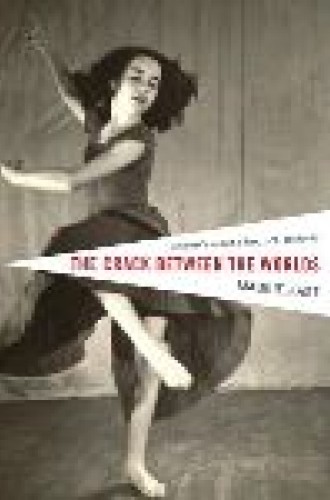The Crack Between the Worlds: A Dancer's Memoir of Loss, Faith, and Family
At the age of ten, Maggie Kast took a dance class with a former member of the Martha Graham Dance Company. This teacher one day quoted Martha Graham’s principal dancer and husband, Erick Hawkins: “This studio is a sacred space, a temple of dance. From now on, there will be no talking or laughing, only movement and music.” Fueled by the ritual and myth around the Graham technique, Maggie grew up to become a dancer and choreographer, eventually winning Chicago’s Ruth Page Award for Outstanding Contribution to the Dance Community. For a child of an adamantly irreligious household, the disciplines of dance provided Kast with a type of religious experience; she didn’t come to Christian faith until she was nearly 40.
At the center of this book is a parent’s nightmare made real. While driving along a Jamaican road, Kast’s husband, Eric, lost control of their car, and their three-year-old daughter was killed in the resulting accident. Eric had grown up Roman Catholic but no longer practiced the faith. Kast’s father was an anthropologist who studied religious ritual but held it at a distance; it was something to be observed in other people, but not something in which to participate. In this vacuum of spirituality, Kast began to sense that there was more to her daughter’s death than her mere absence.
As these questions nagged her, she found her best answers in the theology of the Roman Catholic Church, and she was baptized. She says that her new community chose her as much as she chose it. She wrestles with some of the teachings—for example, on women’s ordination and homosexuality—but it was through the church that she became involved in social causes. She took classes at the Catholic Theological Union and became a student of liberation theology. All of these things both enriched her family’s life and created friction within it.
Kast’s storytelling is not linear, which may be disconcerting to some readers, but this is not so much the story of one life as it is an exploration of one faith. Kast will tell about an incident in her churched life, then connect it to an incident that happened before she came to faith, moving back and forth in time, seeking an understanding of her own life. What another memoirist might treat as glamorous (travels around the world, for example), Kast mentions only in passing, as though it is unimportant to the inner life she’s tracking. Instead, she remembers sensual details, like the smell of food. Like a dance, the book moves about in distinct patterns, revisiting movements and themes, leaving impressions and emotions rather than a straightforward narrative.
Toward the end of the book, Kast plainly states, “Sometimes I think my faith is in my body,” and, indeed, what distinct moments she gives us are presented with sensual description, whether the feeling she had when her mother explained sex or her reaction the first time she saw someone descend to a kneeler at church in fervent, personal prayer—how her own body went rigid, boardlike. She thought she could never do such a thing. Later, she fought the urge to completely prostrate herself at the Words of Institution. She was drawn to the movements of the liturgy, the physical elements of the sacraments. She envisioned, but never produced, a daylong feast of Holy Communion in her backyard, with dancing and singing, bread and wine. Surely, Kast’s is an embodied faith.
This leads me to share one frustration with this otherwise beautifully and thoughtfully written book. For all of her talk of physical activity, of connecting Graham ritual and dance-studio myth to sacraments and church theology, Kast never directly addresses the most obvious of theological terms: incarnation, resurrection, imago Dei. These seem like conspicuously absent topics for a theologically trained dancer.
But that’s faulting Kast for not writing the book I hoped to read—and really, all those ideas are there, hidden just beneath the surface. What we do have is a book full of grit and light, of tumultuous questions and unaccountable peace. This is not a “how I came to faith and why you should too” evangelism tract, but a witness who says, “I came to faith and this is the best I can do to explain it.” Kast’s honest, if admittedly slippery, accounting of memory and experience does more than baldly state doctrinal positions. Like the sacraments that attract and hold her, Kast’s book is not only what we see. It is a visible testament that points to a hidden reality.





